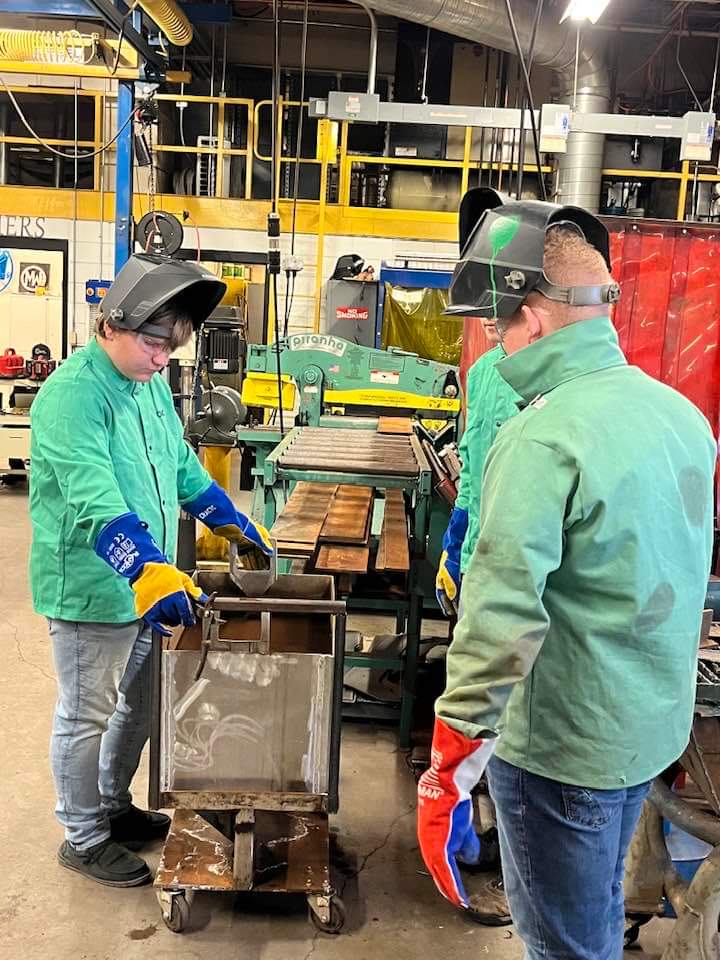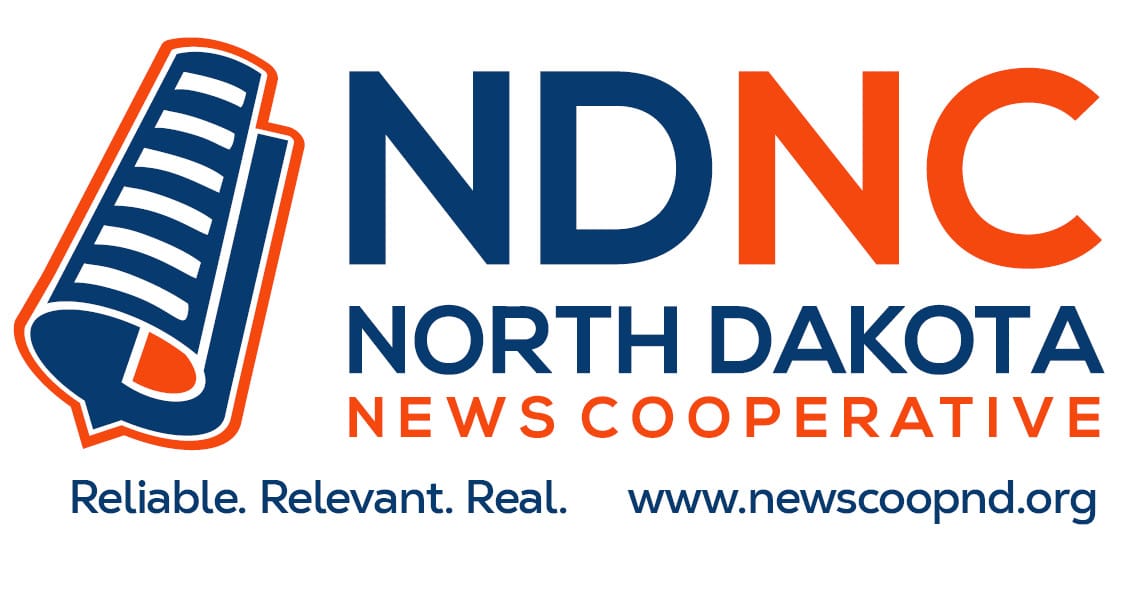Opportunities to explore expand for North Dakota students
Focus on exposure, professional skills, and mentoring to navigate varied pathways

College or bust is far from the only option for North Dakota’s high school students. Across the state, students are finding career pathways in trades and technical fields, opportunities that pay surprisingly well and aren’t bogged down with school loan debt.
The idea is that enhancing vocational and technical programs in high schools will fill the local workforce, provide paths forward for students, and retain younger people in their local communities.
Derek Simonsen, superintendent of Griggs County Central Public School District in Cooperstown, spearheads an effort to retool the school’s vocational curriculum into a Career Pathways program for students from seventh grade through senior year.
“We’re kind of building the plane as we fly,” Simonsen said.
Instead of starting with middle schoolers and building up from the foundation, Simonsen said the school rolled in the upper grades from the get-go due to the intense community needs.
“We thought these kids need skills, they need to be introduced to some of these jobs and career paths, and our employers are begging for people right now,” Simonsen said.
The program would funnel students into area businesses to gain experience and potentially take up positions. Examples are welders for companies like Sheyenne Tooling & Manufacturing, automotive repair techs at Cooper Collision, and a pipeline of nursing assistants and nurses for the soon-to-open Cooperstown Medical Center facility.
Besides classes to prepare them, upper students get work experience at these businesses, along with professional skills like communication, interviewing and resume building.
Younger students primarily work on skills like showing respect, positivity, critical-thinking, effective listening and communications.
“We've realized the professional side of things is probably a bigger challenge,” Simonsen said. “A lot of these students just don't know how to be in a professional workplace or how to communicate in person because of the technology barrier, I would call it.”
The Griggs initiative is one piece of a larger puzzle to fill in the blanks in a statewide worker shortage. More focus in work-based learning programs is forthcoming.
“We're trying to create the mindset that there are alternative paths, rather than just going to the four-year degree,” said Dawn Ulmer, strategic partnerships manager at the North Dakota Department of Career and Technical Education.
“They can actually get job experience and sometimes choose a path that they want to take for a career,” Ulmer said. “There's so many opportunities within North Dakota right now.”
Over the past year, 30 certified work-based learning coordinators were trained to help develop the programs in communities around the state.
“I think the businesses in town really appreciate the opportunity to get kids in that will be part of the future workforce and kind of get a chance to see what they can do,” said Richard Danielson, one of two certified work-based learning coordinators at Griggs. “Especially the ones who are really short on employees.”
Opportunities abound
North Dakota isn’t the lonely Maytag repairman in this situation. Nationally, there are as many as 500,000 jobs in construction that need to be filled, a number expected to grow as infrastructure funds flow in the next few years.
A recent study from Georgetown University’s Center on Education and the Workforce (CEW) found that 30 million jobs in the U.S. pay an average of $55,000 per year without a four-year degree.
At the same time, application rates for trade and technical jobs dropped by 49 percent last year compared to 2020 levels, according to data provided by recruiting platform Handshake.
“The fact is that there are more choices, and that really opens up a variety and myriad of opportunities for a young person today to decide on what their pathway is,” said Nicole Smith, chief economist at CEW. “The challenge, and the thing we haven't done well, is to really let people know exactly what that pathway is.”
She said what’s needed is a greater focus on helping students navigate the entire career system, including trades, technical education, two- to four-year degrees and beyond.
This would be a “more inclusive and well rounded” system of mentoring and counseling that taps into individual desires and interests, to help lead students down their desired paths, she said.
At the Bismarck Career Academy and Technical Center, program administrators are trying to do just that. Currently the focus is on student career development grades nine through senior year, with plans to expand down to the sixth through eighth grade levels.
“You’ve got to start them out at that age,” said Dale Hoerauf, program director. “Now, that doesn't mean we stamp them on the head as a carpenter and that's what they do. What we're doing is giving them an opportunity to explore.”
Programs include applied agriculture, graphic design, cybersecurity, energy and power production, aviation, coding and carpentry and everything between.
The academy partners with the Central Region Area Career and Technical Center (CRACTC) which offers virtual and hybrid courses so that those further away from Bismarck can also access programs.
“I tell students, part of what they are doing right now is exploring different opportunities, so that they know, when they’re in high school, before they get $10,000 or $20,000 in debt [from college tuition], that it wasn’t for them,” Lyle Krueger, assistant director at CRACTC, said.
As an example, Krueger said the program recently brought in students from 14 regional schools for an “Aviation Day” at the Bismarck Municipal Airport.
“They got drone exposure, they got to go to the hangar, they went to the weather service, they went to mechanical, they went to all these different areas within the aviation field, not just pilots,” Krueger said. “Just giving kids that exposure is huge to get them down the right path.”
Daniel Blend, 17, a home-schooled senior from New Salem, is a prime example of that exposure through CRACTC. Freshman year he focused on IT studies, sophomore year coding, junior year computer networking as well as mechanics, and now in his senior year he’s working through STEM courses.
“I can’t really fathom the ability of a student such as myself to have these courses and classes to take in this day and age,” Daniel said.
For Blend, the work side of the school-to-work experience has mainly been about exposure than actual work. These are mainly experiences gained at “hands-on days” where students either visit a business or have representatives come to them to speak about the intricacies of their profession.
“Businesses want to take people who have more of the hands-on training, rather than people that went to a college or university and just have the piece of paper,” Blend said. “People with that hands on experience are way faster to train.”
Legislative developments
The first bill Gov. Doug Burgum signed in the current 2023 legislative session provides a $68 million line of credit for the construction of 13 new career academies around the state.
Lawmakers had approved $88 million of funding for career academies in November 2021, with $68 million of that coming from the U.S. Treasury’s Coronavirus Capital Project Fund, and $20 million from the state. Disagreement over use of those federal funds has stalled their release, as well as construction of those academies, so the credit line is an attempt to push that forward.
House Bill 1019 appropriates nearly $65 million in funding for career and technical education if passed as it currently stands.
House Bill 1383, which has already passed both the House and Senate, allows for apprenticeship tax credits covering 10 percent of stipends or salaries for qualified apprentices up to five per entity.
Senate Bill 2170, which has passed the Senate, is also an important one to watch. It calls for a legislative study to examine federal labor laws to see if exemptions can be made to allow minors to work in construction. The current age is set at 18 and above, but some would like to see if it is possible to lower that to age 16 in some cases.
The North Dakota News Cooperative is a nonprofit news organization providing reliable and independent reporting on issues and events that impact the lives of North Dakotans. The organization increases the public’s access to quality journalism and advances news literacy across the state. For more information about NDNC or to make a charitable contribution, please visit newscoopnd.org. Send comments, suggestions or tips to michael@newscoopnd.org. Follow us on Twitter: https://twitter.com/NDNewsCoop.



